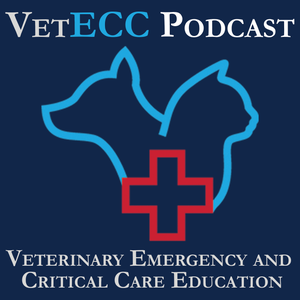
The VetECC Podcast
vetemergecc
- 1 hour 20 minutes9: CPR Questions with Laura Rosewell
Hello friends, today we chat with Registered Veterinary Nurse (VTS IM) Laura Rosewell about CPR. This was audio ripped from an Instagram live session we did recently. We talk through general CPR business, answer questions, and talk about our own experiences. Please let us know if you have any questions.
Laura is at https://www.instagram.com/vetinternalmedicinenursing/
We discuss the RECOVER Guidelines which are available free online: https://recoverinitiative.org/cpr-guidelines/current-recover-guideline/
As also recommend (but not sponsored by) the Veterinary RECOVER Certification Course for both nurses/techs and veterinarians: https://recoverinitiative.org/
25 August 2020, 12:56 pm - 1 hour 33 minutes8: Shop talk with Lou Northway
In this episode we catch up with Lou Northway, aka Lou the Vet Nurse.
Topics discussed in the podcast:
Who is Lou and what does she do?
Keeping patients warm during procedures and anaesthetics
Getting your team engaged in auditing and patient safety
The Webinar Vet Wellness Series
Laryngoscope as a Murder Weapon
Books mentioned:
If you want to support the show you can help by buying the books via the links below
Adam Kay's Book: This is Going to Hurt: Secret Diaries of a Junior Doctor
Atul Gawande: The Checklist Manifesto: How to Get Things Right
30 May 2020, 11:48 am - 15 minutes 19 seconds7. Allergy or anaphylaxis? First line treatment
In this episode, we have a short chat about how to identify anaphylaxis the management differences between an allergic reaction and anaphylaxis.
Doses quoted in the episode:
Adrenaline/Epinephrine
IV/IM Dose: 0.005 - 0.01 mg/kg
Infusion: 0.003 mg/kg/hr (0.05 mcg/kg/minute, 3 mcg/kg/hr depending on how your brain works).
Some fun papers:
Lisciandro GR. Abdominal FAST (AFAST)-detected hemorrhagic effusion in 11 dogs with acute collapse and gallbladder wall edema (halo sign) with presumed anaphylaxis (abstract). J Vet Emerg Crit Care. 2016.
World allergy organization guidelines for the assessment and management of anaphylaxis. World Allergy Organization Journal. 2010;4(2):13–37.
Comparison of clinical findings between dogs with suspected anaphylaxis and dogs with confirmed sepsis. JAVMA. 2017.
Anaphylaxis in dogs and cats. J Vet Emerg Crit Care. 2013.
24 June 2019, 8:50 am - 1 hour 15 minutes6. Radford on rabies and taking your health seriously
Today we welcome Radford G. Davis, associate professor at Iowa State University. If you are curious about any of the following topics then this podcast is for you!
Alternate career paths to clinic-based medicine
Rabies risks and what to do when you suspect rabies
What zoonotic diseases post the highest risk to people
Are needle sticks really a threat to people
What’s better - hand washing or hand sanitizer?
How to stay safe when interacting with patients
What to do if coming in contact with infectious material
How to develop an infectious disease control plan
Radford’s university page:
https://www.vetmed.iastate.edu/users/rgdavis
Recent rabies webinar:
https://www.thewebinarvet.com/speaker/radford-davis
Plague in dogs and cats:
https://www.cliniciansbrief.com/article/plague-cats-dogs-public-health-concern
Photo competition:
Further rabies information: https://www.sahealth.sa.gov.au/wps/wcm/connect/public+content/sa+health+internet/health+topics/health+conditions+prevention+and+treatment/immunisation/vaccines/rabies+vaccines
Further rabies information: http://nasphv.org/Documents/NASPHVRabiesCompendium.pdf
Infection control plan:
http://www.nasphv.org/documentsCompendiaVet.html
Books:
This is going to hurt: diaries of a junior doctor https://amzn.to/2TW1nk1
Churchill: Walking with destiny https://amzn.to/2EjEmlL
Development as freedom https://amzn.to/2X6sZoJ
19 February 2019, 9:50 am - 1 hour 14 minutes5. Shop talk with Liz Hughston. Mentoring, maropitant, and madness.
In this episode of the VetECC podcast, I interview Liz Hughston MEd., RVT, CVT, VTS (SAIM, ECC) about her role as a mentor and practice consultant, as well as differences between practice in the USA and the UK. Look forward to an hour of shop talk, laughs, and stories about our experiences in veterinary medicine, as well as some critical evaluation of how our behaviour can affect practice.
8 January 2019, 7:01 pm - 29 minutes 9 seconds4. Dyspnoea, the first five minutes
Hello friends, we are back with episode two of the foundations series. This time we are talking about approaching the dyspneic patient and what to do in the first five minutes. The papers/articles mentioned are linked below, including an excellent summary from previous guest Noah Jones. If you have any questions please do not hesitate to get in touch via the website at www.vetemerge.cc
CO2 management for oxygen cages
17 December 2018, 11:17 am - 1 hour 24 minutes3. Potential pitfalls and pearls for patients with pulmonary problems
We are joined by Noah Jones, BSRT, RRT-ACCS, RCP, RVT, VTS (Research Anesthetist) respiratory guru extraordinaire. Noah is both a veterinary technician specialist and a human respiratory therapist. He works in a large referral hospital on the East Coast. His favourite topic is mechanical ventilation, and he travels the country teaching ventilator wet/dry labs at various conferences and venues. He is also a husband and father, and we have a guest appearance by his charming daughter during the show.
We discuss a range of topics, including oxygen therapy, monitoring, and blood sampling, and I get schooled in respiratory physiology.
Topics discussed in the podcast:
Specialising in veterinary medicine
Myocardial steal
Criteria for intubation/ventilation
Transporting the critically unwell respiratory patient
Chest physiotherapy/coupage in pneumonia. Associated papers:
https://www.cochrane.org/CD006338/ARI_chest-physiotherapy-for-pneumonia-in-adults
https://www.cochrane.org/CD010277/chest-physiotherapy-for-pneumonia-in-childrenNebulising: http://rc.rcjournal.com/content/60/7/1071.short
Canine Influenza (pardon me forgetting the country in the podcast):https://www.cbc.ca/news/canada/kitchener-waterloo/guelph-professor-investigates-dog-influenza-1.4480602
Retrograde intubation:
https://www.youtube.com/watch?v=mpm6NqYkgGICuffing endotracheal tubes:
https://insights.ovid.com/pubmed?pmid=8484512
https://www.vaajournal.org/article/S1467-2987(16)30420-2/fulltext
Oxygen in myocardial infarction:
https://www.ncbi.nlm.nih.gov/pubmedhealth/PMH0028423/
Oxygen use in the ICU:
https://jamanetwork.com/journals/jama/fullarticle/2565306Show notes for comments: http://vetemerge.cc/podcast/episode-2-potential-pitfalls-and-pearls-for-patients-with-pulmonary-problems
15 October 2018, 5:28 pm - 21 minutes 52 seconds2. Fluid Resuscitation
Episode one of our foundations series is a brief primer on performing fluid resuscitation in patients with hypovolaemic shock.
If you have any questions, please head to our Facebook page (www.facebook.com/vetemergecc) or our website (www.vetemerge.cc).
Belows is a link for calculating fluid rates following resuscitation:
https://www.aaha.org/public_documents/professional/guidelines/fluidtherapy_guidlines_toolkit.pdf
Further reading about hypovolaemic shock and fluid therapy:
http://www.vetfolio.com/cardiology/shock-pathophysiology
8 October 2018, 10:46 am - 1 hour 16 minutes1. Sedation and analgesia in the veterinary emergency room
Thank you for listening to our very first Emergency and Critical Care Education podcast. We were graced with the presence of Dr Andrew Foster, resident in anaesthesia and analgesia at the Royal Veterinary College. We discuss the various tools in our arsenal for managing pain and to provide sedation in the veterinary emergency room. An associated article and other resources can be found at: http://vetemerge.cc/podcast/episode-1-sedation-and-analgesia-in-the-veterinary-emergency-room
19 September 2018, 2:30 pm - More Episodes? Get the App
Your feedback is valuable to us. Should you encounter any bugs, glitches, lack of functionality or other problems, please email us on [email protected] or join Moon.FM Telegram Group where you can talk directly to the dev team who are happy to answer any queries.
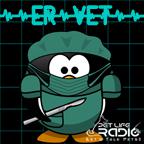 ER Vet - Stories from the animal ER - Pet Life Radio Original (PetLifeRadio.com)
ER Vet - Stories from the animal ER - Pet Life Radio Original (PetLifeRadio.com)
 Purr Podcast
Purr Podcast
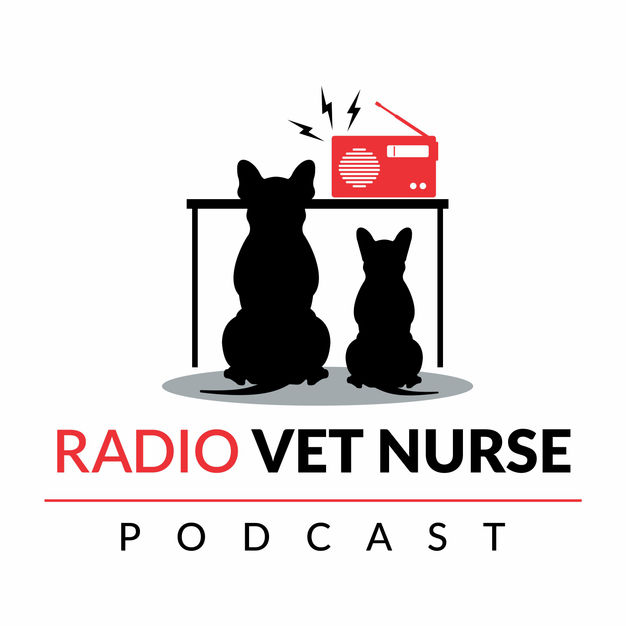 Radio Vet Nurse
Radio Vet Nurse
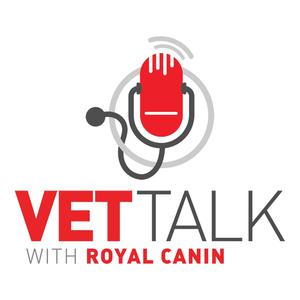 Vet Talk with Royal Canin
Vet Talk with Royal Canin
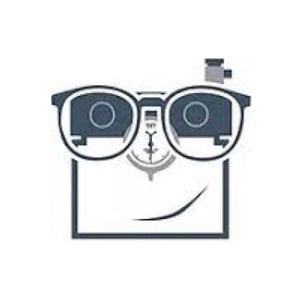 Veterinary Anesthesia Nerds
Veterinary Anesthesia Nerds